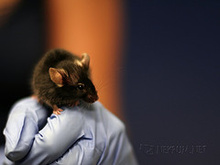Tags
animals, arthropod, biology, camel spider, naturalist, Popular science, science, Science in Society
Every word in the title is a lie. The creature I’d like to introduce isn’t a spider and it doesn’t have ten legs, but that was exactly what I thought when I got a good look at it, which wasn’t the first time I saw it. The first time I saw it, I thought it might have been a plant’s root or some kind of stolon. I had just jumped in for a swim on Saturday afternoon when I saw something brown at the bottom of the pool. It wasn’t moving, and it seemed to be about the size of my thumb. Grabbing the sieve, I dived down and fished it out, then called my partner over. “Can you have a better look at this and see what it is? I think it’s some kind of root, but I can’t really see it properly.” My long, wet hair was obscuring my vision and I was trying to keep the sieve above water.
“It’s a spider,” she said. “A gigantic spider!” (It was gigantic — around 8-9cm across!) I’m lucky enough to be married to someone with a fascination for creepy-crawlies; with a smile, she deposited the dead spider in a jar for later examination and then joined me in the pool. Continue reading




You must be logged in to post a comment.